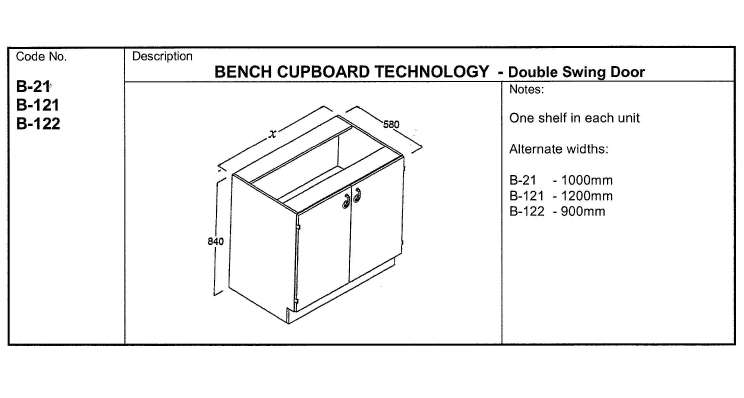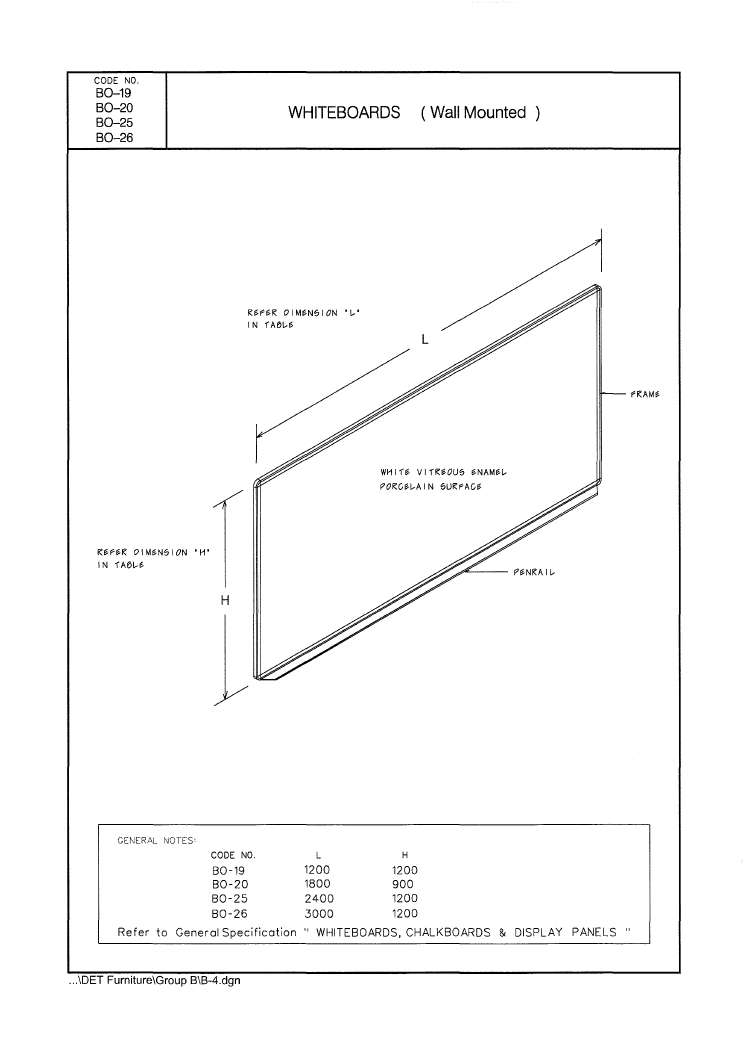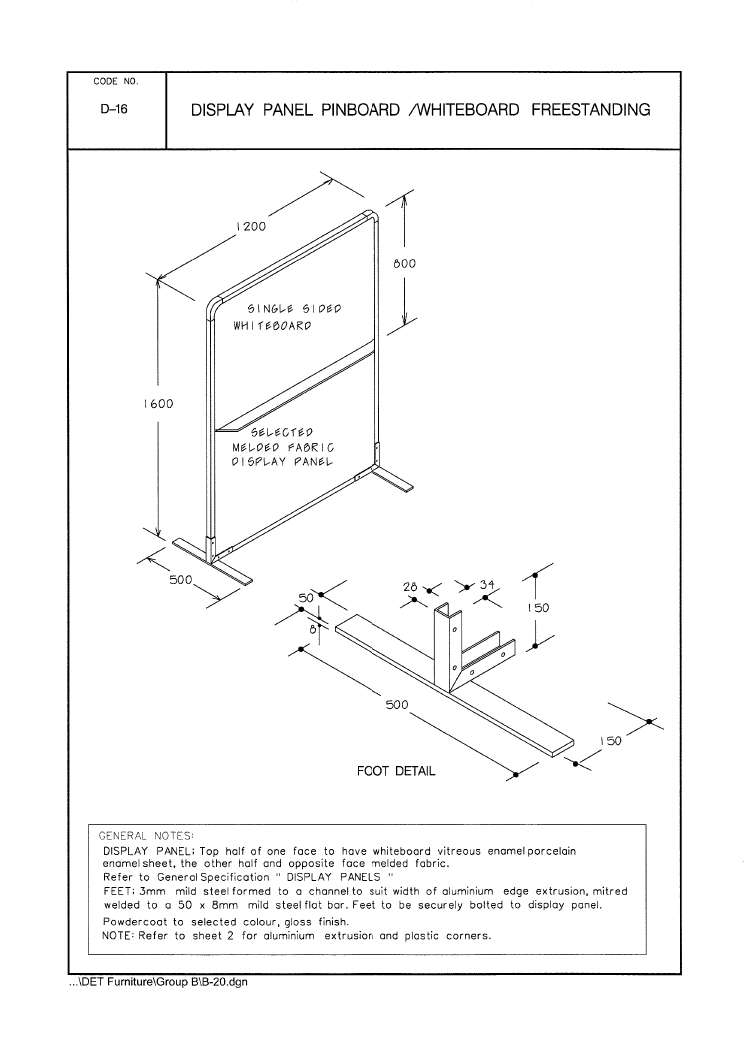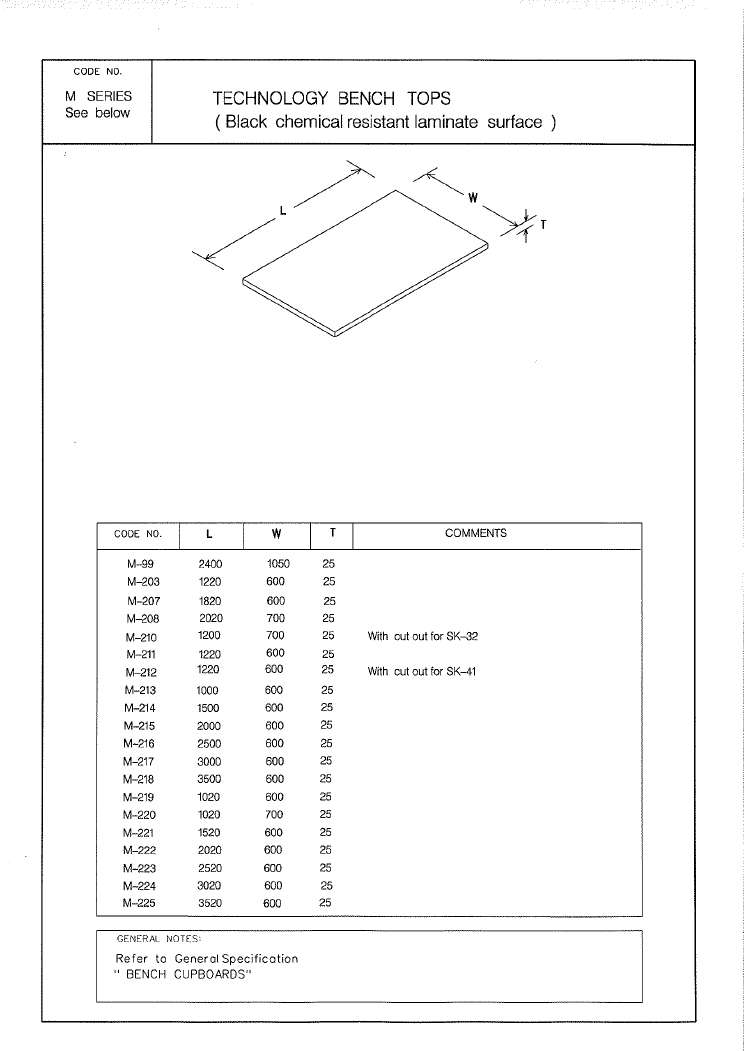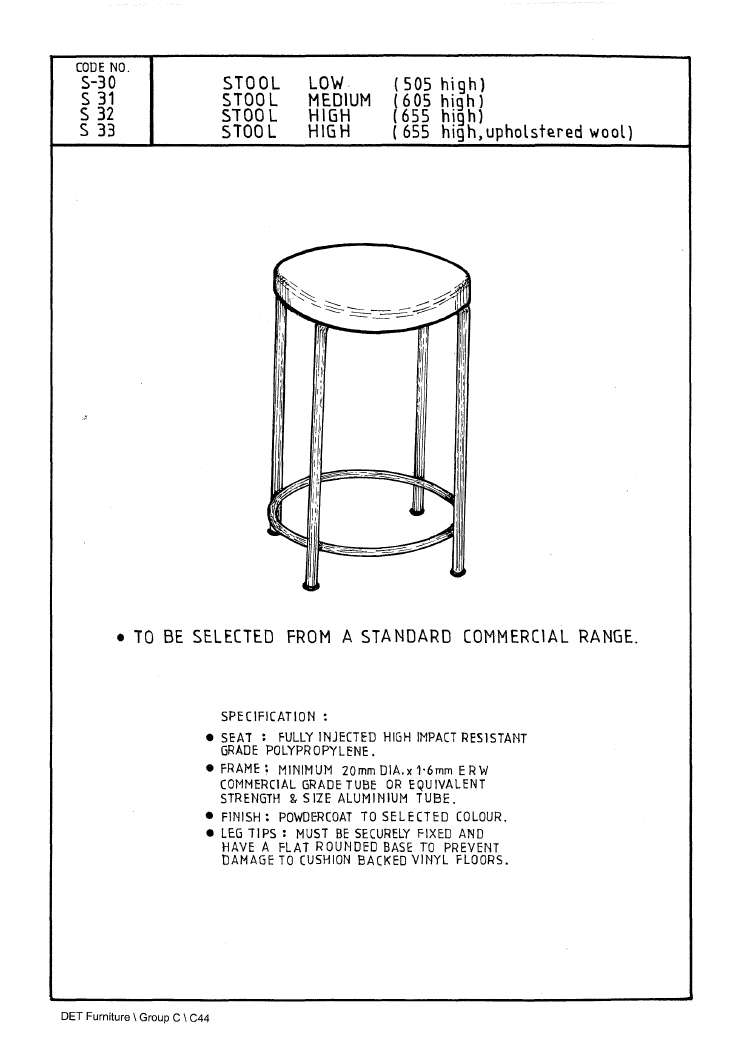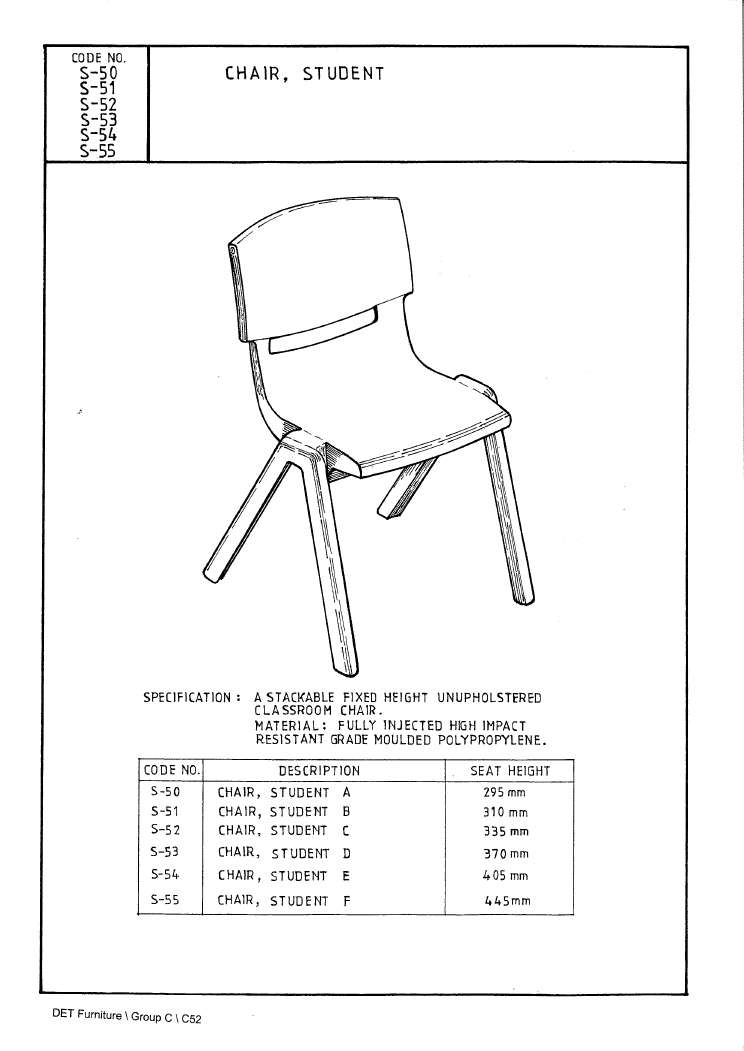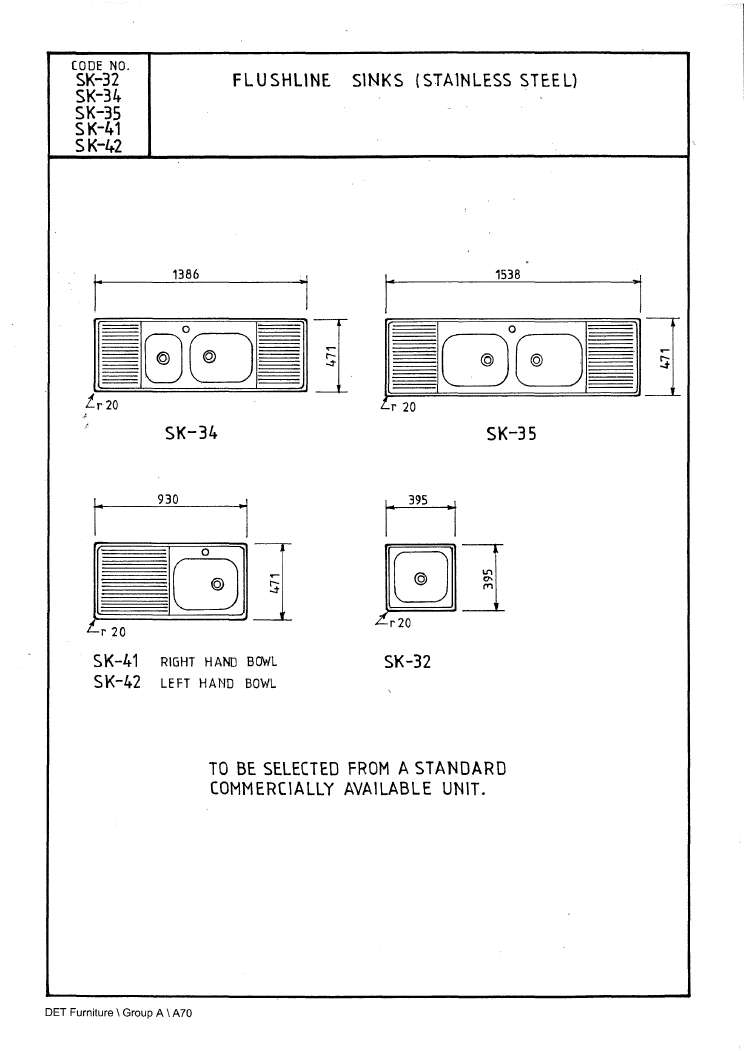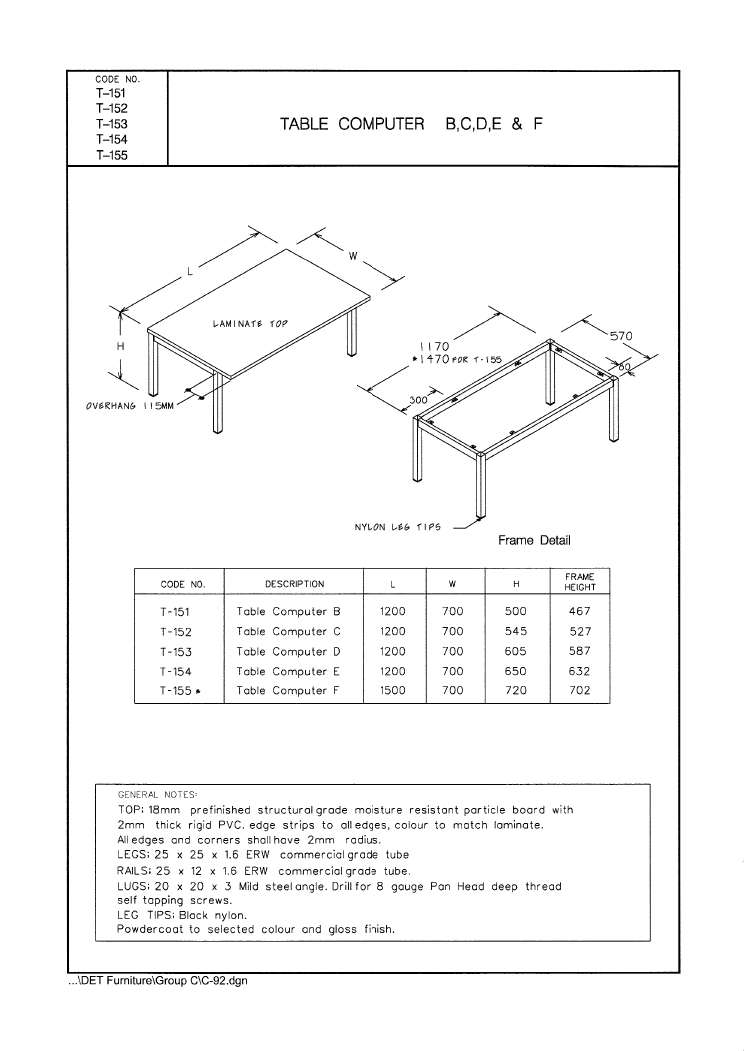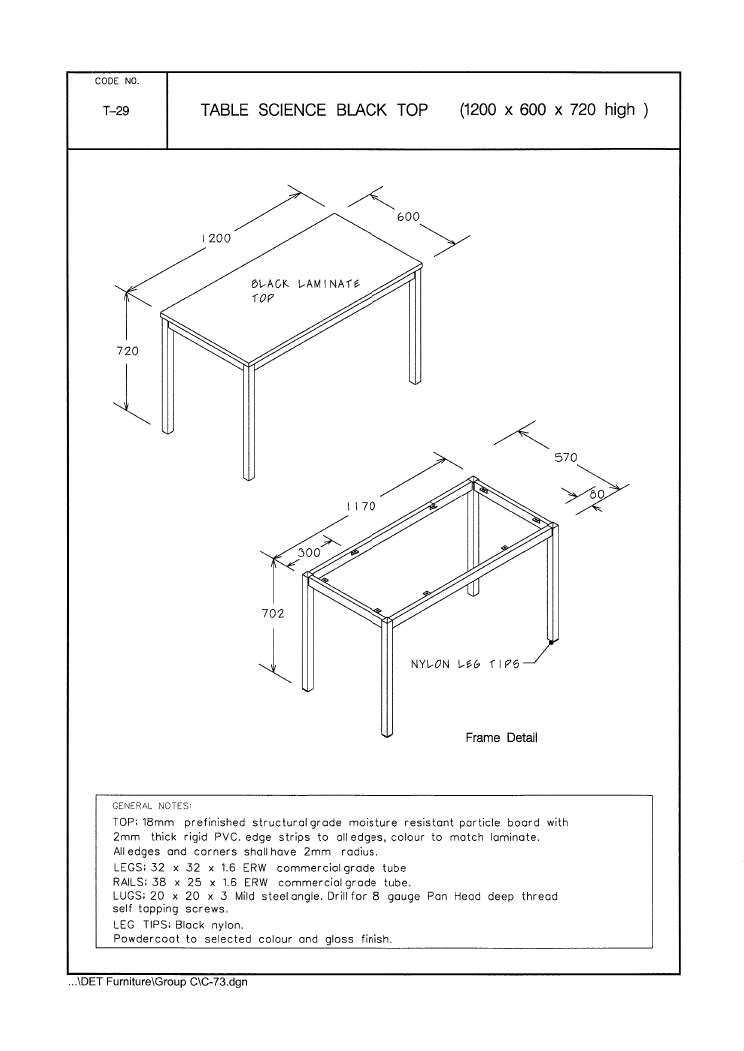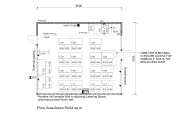This space provides a learning space for 26-30 students and one teacher. The room is designed as a general theory space adjacent to the active laboratory space and supports research, reflect, discussion, explicit teaching, and presentation activities. A science demonstration bench with a sink and overhead mirror is provided at the front of the room for the teacher or a small group to demonstrate and perform experiments. Depending on furniture available, there is some scope to modify settings during a session for collaborative activities. There is an independent work area for individuals and pairs.
FURTHER OPPORTUNITIES
There is potential for an indicative operable wall to an adjoining General Learning Space, and retraction of this operable wall would maximise use of this learning space and enable a collaborative learning and teaching model for two teachers to 40-60 students. Connecting General Learning Spaces would enable greater diversity of learning settings reducing the need for constant reconfiguration of furniture. Reducing the number of desks and chairs and using different furniture and fittings to create alternative learning settings can also increase room use for more diverse learning processes. The inclusion of a glass sliding door to the adjacent laboratory would create ease of flow and greater access between learning spaces and the adjacent laboratory.
LEARNING IMPLICATIONS
Given the size of the room and the number of tables and chairs provided, consideration will need to be given to acoustic and spatial implications depending on the number and size of groups and the types of learning activities planned. Co-locating same year classes at the same time in adjoining Science General Learning spaces will maximise the use of this General Learning Space and the adjacent shared laboratory.
Explore ideas, share and develop opinions, debate and decide.
This learning process is effective with small to large groups provided specific criteria can be met.
Display, exchange and encounter learning artefacts.
This learning process is effective with small to very large groups provided specific criteria can be met.
Teachers and/or students demonstrate, communicate ideas and/or teach explicitly.
This learning process is effective with small to very large groups provided specific criteria can be met.
Hands on interaction, experimentation and evaluation with materials to discover, design and test.
This learning process is effective with small to very large groups provided specific criteria can be met.
Implement, build or assemble systems and media.
This learning process is effective with small to very large groups provided specific criteria can be met.
Use written, graphical and digital resources to personally reflect, consolidate and/or enquire.
This learning process is for individual or small groups and is effective provided specific criteria can be met.
Practise, refine and execute performance based activity.
This learning process is effective with small to very large groups provided specific criteria can be met.
Ratings against the Design Criteria
All criteria regarding spatial layout, fit-out, visibility and acoustics can be met.
Most criteria regarding spatial layout, fit-out, visibility and acoustics can be met. Some consideration will need to be given to determine whether constraints on ease of use, group size or materials will compromise the learning outcomes.
Few of the criteria regarding spatial layout, fit-out, visibility and acoustics can be met. A lot of consideration will need to be given to determine how the constraints on ease of use, group size or materials can be overcome.
Very few of the criteria regarding spatial layout, fit-out, visibility and acoustics can be met. This space should only be used for this learning mode as a last resort.
This space is incapable of supporting this learning mode.
This learning process is not employed with this size group.



